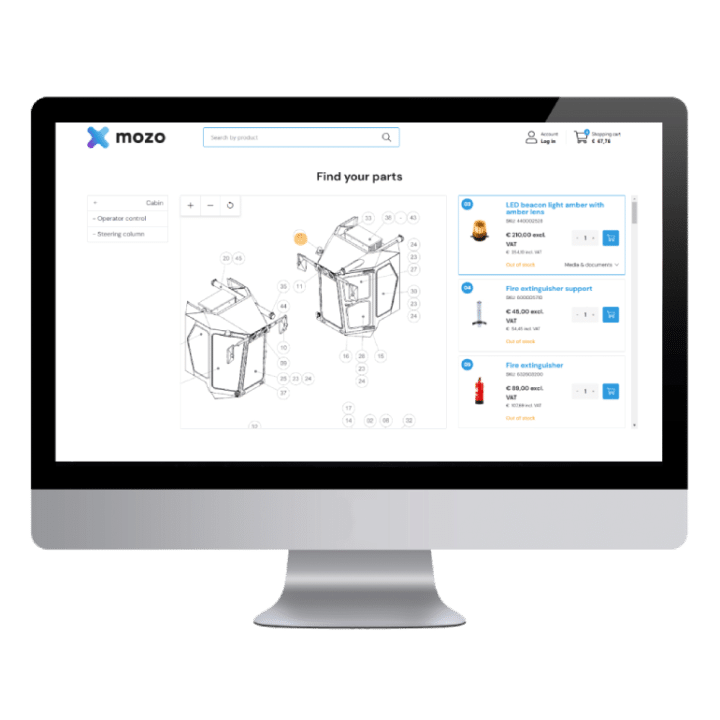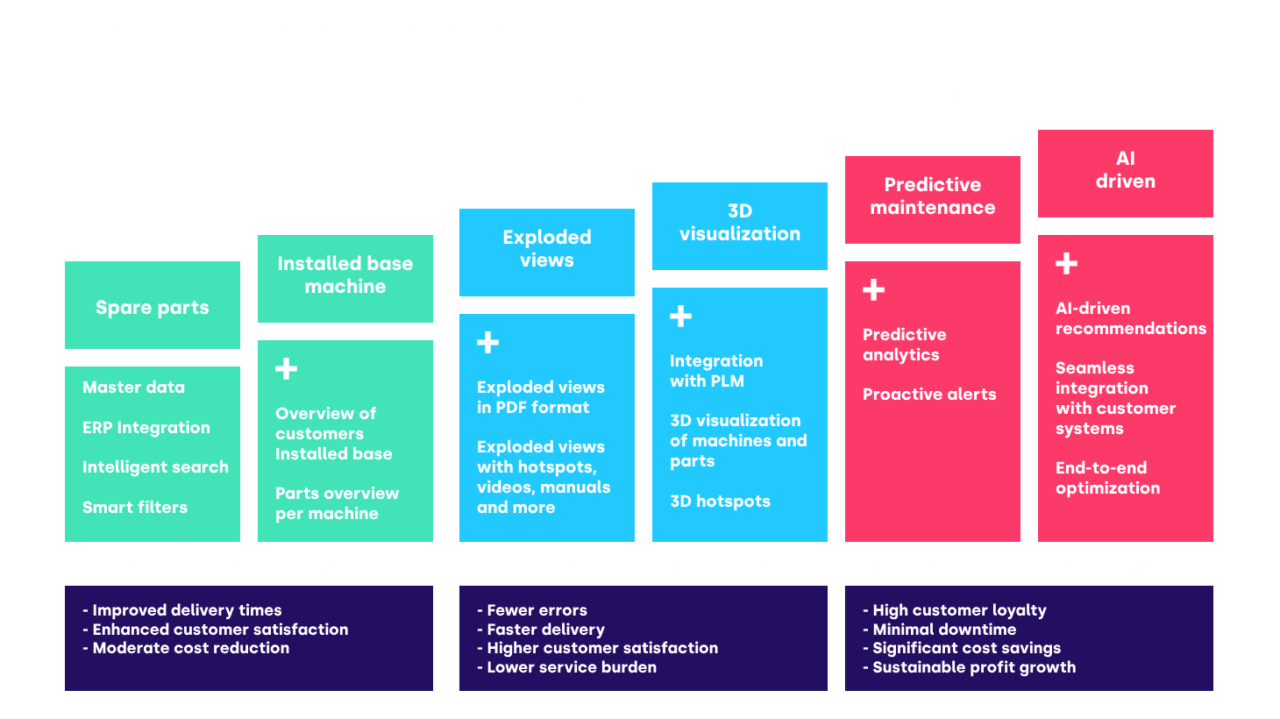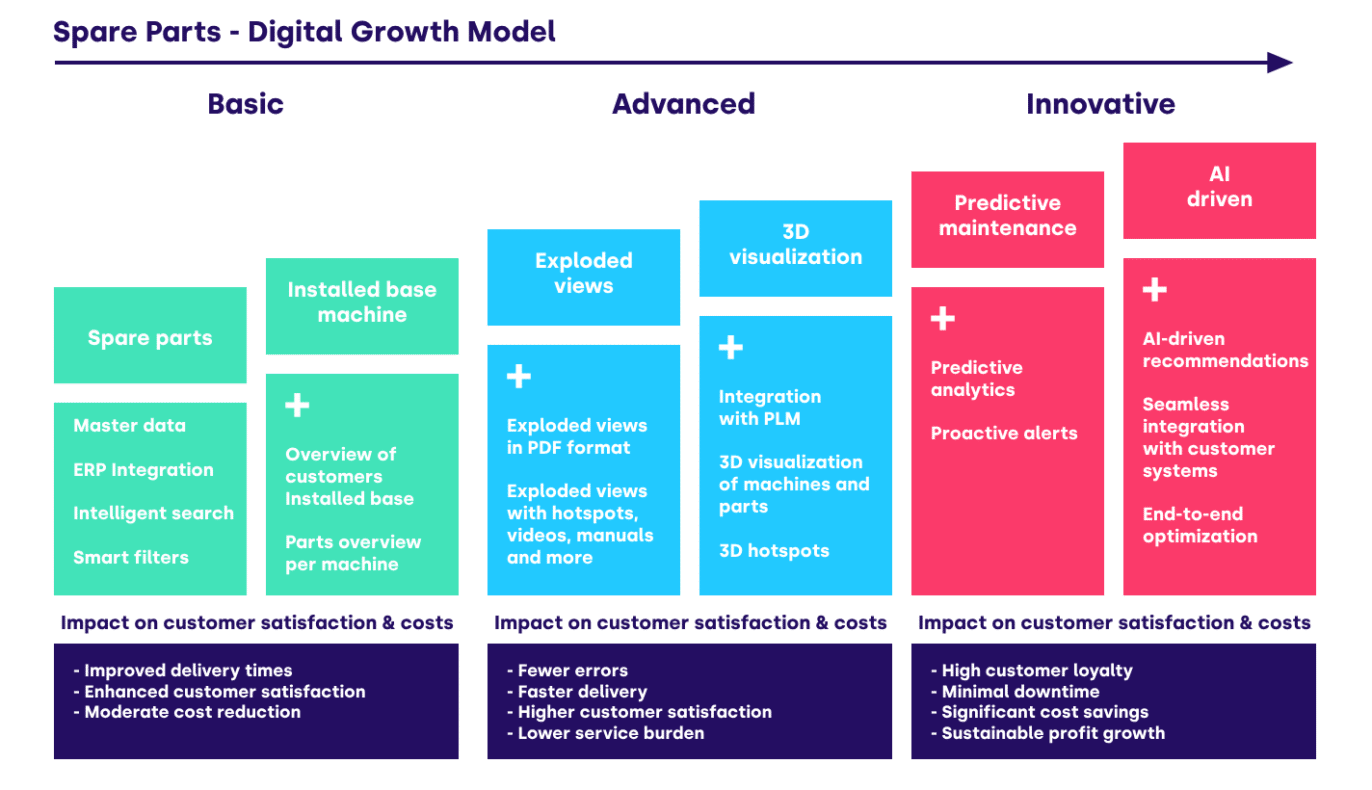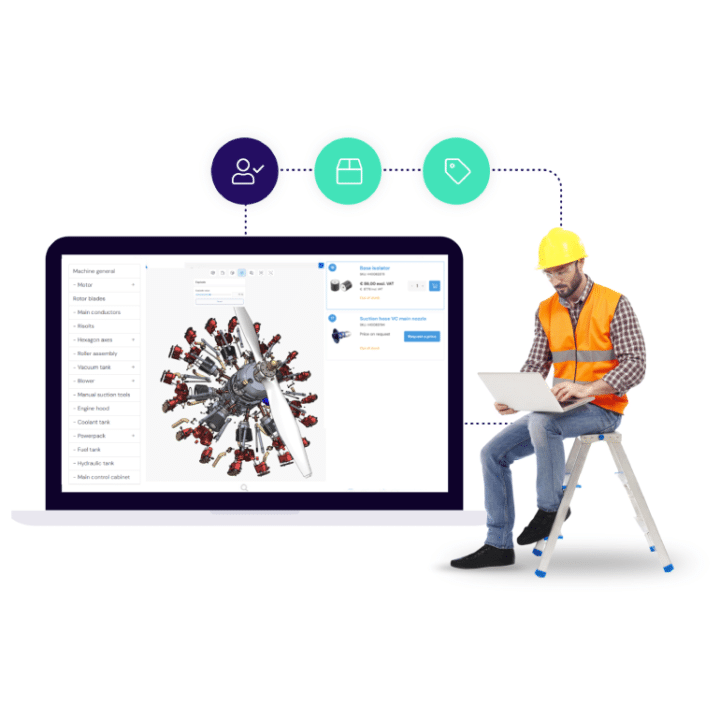From Reactive Supplier to Proactive Partner: Spare Parts and Aftermarket Process
Introduction
In many industries, from industrial machinery to consumer electronics and from aviation to agricultural vehicles, spare parts management plays an increasingly important role. Previously focused on quickly fixing a defect, customer expectations have shifted to an integrated service concept. Customers now expect not only functional products but also quick, transparent, and easy access to the right replacement parts. Customer satisfaction is now closely tied to the efficiency and customer focus of the spare parts process.
This whitepaper highlights the key themes, challenges, and opportunities in optimizing your spare parts management. We discuss how digital tools and proactive service concepts can contribute to higher customer loyalty, reduced costs, and a lasting competitive advantage. Concrete case studies are provided—both success stories and cautionary examples—alongside a maturity model to help organizations determine their current level and map out a route for further professionalization.
Why Spare Parts Management Is Central
Traditionally, spare parts were often seen as a necessary evil: items kept in stock to repair broken machines or products. Today, it has become a strategic part of an organization’s proposition. Modern customers are vocal, demanding, and seek peace of mind. Companies that quickly, transparently, and adequately meet spare parts needs stand out as reliable partners, not just one-off suppliers.
An efficient and customer-focused spare parts service leads to:
- Higher customer satisfaction: Reduced downtime, immediate access to parts, and clear communication build customer trust.
- Stronger brand loyalty: Satisfied customers are more likely to make repeat purchases.
- Increased profitability: Well-organized aftersales and service activities provide stable, often high-margin revenue streams. Repairs, maintenance contracts, and part sales can be significant and sustainable profit drivers, even as initial product sales plateau.
Key Themes in Spare Parts Management
1. Demand Forecasting & Inventory Optimization
Balancing sufficient stock for quick delivery with minimizing excess inventory is a major challenge. Modern supply chain analytics, combined with machine learning and historical data, enable more accurate predictions of which parts will be needed and when.
This approach ensures faster service for customers and lowers internal inventory management costs. Organizations that execute this well transition from reactive (waiting for customer inquiries) to proactive (anticipating customer needs), saving costs and improving service levels.
2. Fast & Transparent Logistics
Logistics is the backbone of the spare parts process. Strategic warehouses, expedited shipping options, and clear delivery times are critical. Transparency—such as online tracking portals—provides customers with peace of mind and trust. Knowing exactly where their part is and when it will arrive reduces uncertainty and customer service calls.
3. Digital Customer Interaction & Self-Service
In today’s era of on-demand services, digital self-service portals for spare parts are essential. Customers must be able to search for parts, view specifications, check availability, and place orders anytime. Advanced search features, visual identification tools, and chatbots enhance the customer experience while reducing the workload for internal staff and operational costs.
4. Predictive Maintenance & Proactive Notifications
Analyzing sensor data and usage logs allows businesses to anticipate part wear and proactively suggest replacements before issues arise. This shifts the organization from being a problem-solver to a proactive partner, reducing downtime and maintenance costs while improving customer experience.
5. Quality & Reliability in the Supply Chain
A reliable network of suppliers and manufacturers is the foundation of an effective spare parts process. High-quality parts prevent frustrations, extra work, and reputational damage. Partnering with quality suppliers and implementing strict quality controls reduces warranty claims and strengthens brand perception.
Digital Solutions for Better Customer Interaction
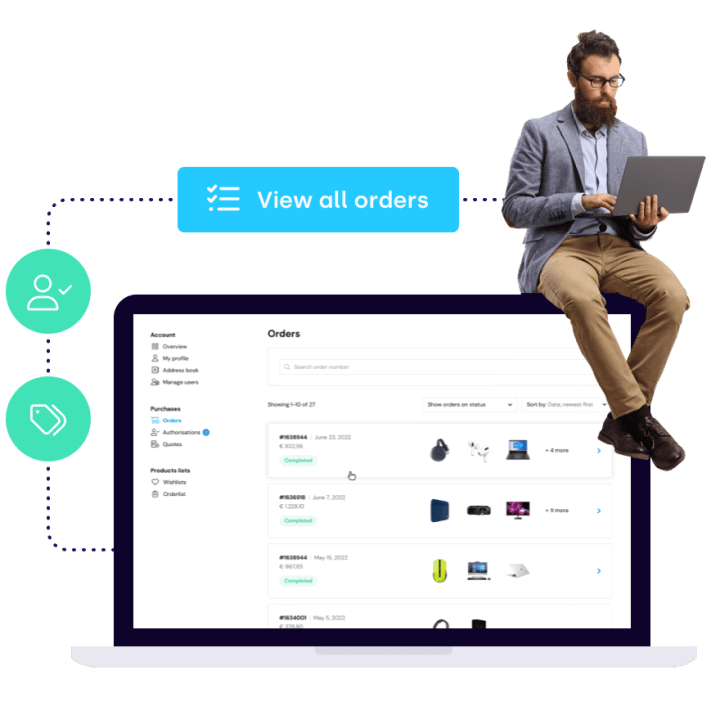
Online Self-Service Portals
24/7 access to parts ordering, inventory checks, and delivery times, drastically reducing help desk pressure and response times.Real-Time Tracking & Tracing
Customers can track their parts like courier deliveries, building transparency and trust while minimizing repeated service calls.Chatbots & Virtual Assistants
Automate routine questions and tasks, providing quick answers and improving customer experience while reducing staff workload.Digital Instructions & AR Applications
Interactive exploded views and augmented reality guides simplify part identification and installation, preventing errors and reducing repair time.Predictive Analytics & Proactive Notifications
Alerts for part replacements reduce unexpected failures and lower ownership costs, enhancing trust and loyalty.Combining Self-Service and Digital Instructions
A powerful example is the integration of self-service portals (online ordering) with digital AR manuals (solution and installation). Imagine a customer needing a machine part. Through a self-service portal, they can easily identify the required part using an interactive diagram. Immediately after, they can access an AR manual that precisely shows how to install the part. All of this happens without needing to contact a service representative, saving both time and money.
This combination reduces returns (the correct part is ordered the first time), shortens repair times (the customer doesn’t wait for a technician), and increases customer satisfaction. It’s a prime example of how digital tools lower costs and improve the customer experience.
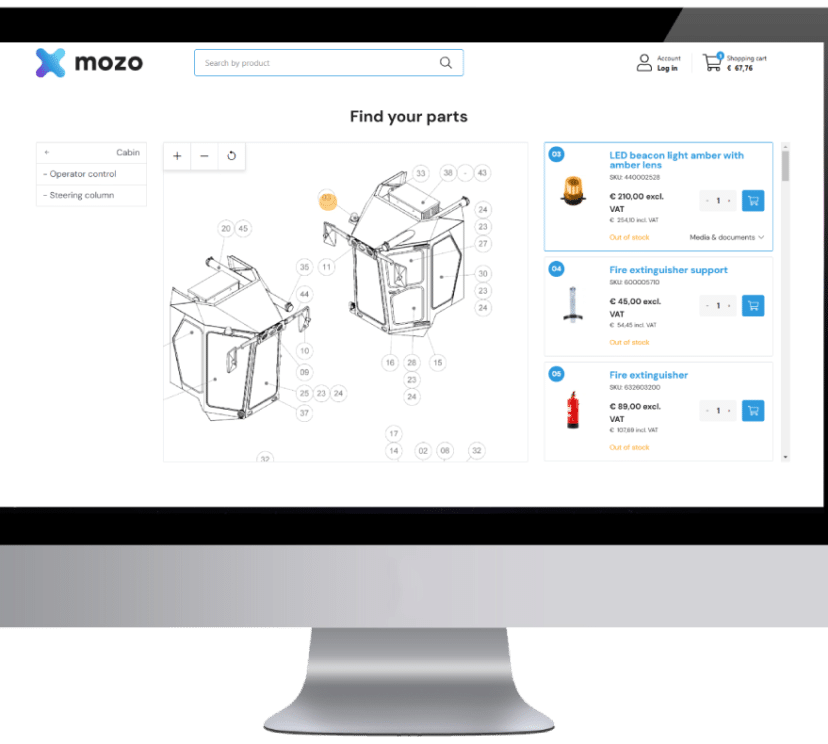
Maturity Model for Spare Parts Optimization
To determine where your organization currently stands and where it can grow, the maturity model below can be used. It helps analyze your current situation and map out a roadmap for further professionalization.
By identifying your current position, you can make targeted investments in technology, processes, and people. This enables your organization to evolve step by step to a higher maturity level, unlocking the associated benefits at each stage.
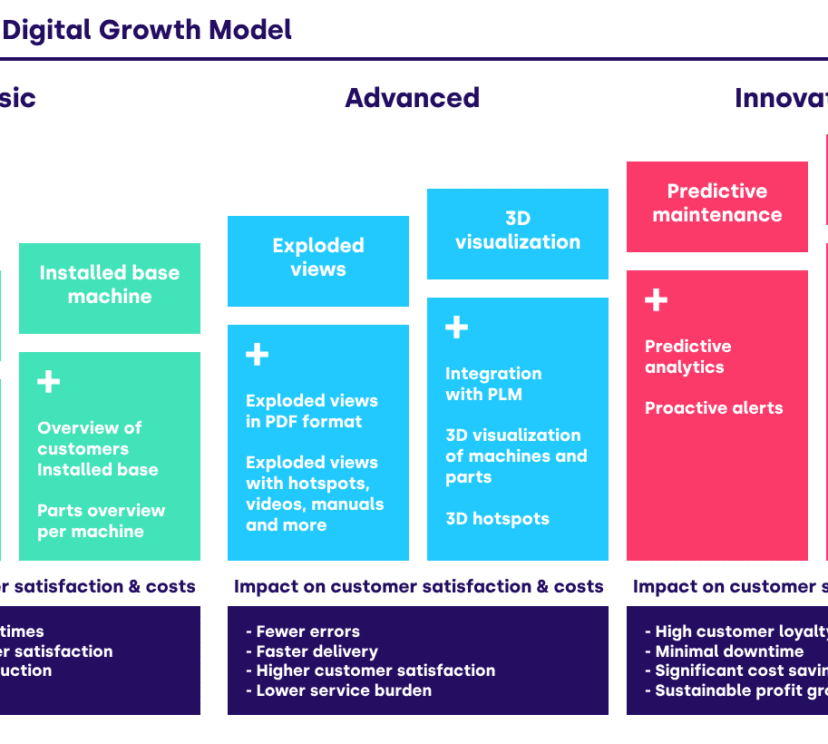
Conclusion and Recommendations
Optimizing spare parts management is a strategic choice with immediate impact on customer satisfaction, brand loyalty, and financial performance. Investing in digital technologies, predictive analytics, quality suppliers, and proactive service concepts distinguishes reliable, customer-focused partners.
With the maturity model in hand, you can focus on advancing professionalization. Start small: introduce a self-service portal, add AR manuals, and then develop predictive analytics to become increasingly proactive. Monitor key performance indicators (such as first-fill rate, customer satisfaction scores, and return rates) to measure progress and continuously improve.
In summary, a future-proof spare parts strategy means:
- Moving from reactive to proactive: predict and anticipate.
- Transitioning from ad-hoc to standardized, and ultimately, fully integrated into the customer experience.
- Shifting from isolated actions to a fully customer-focused, data-driven approach.
This builds a strong foundation for sustainable brand loyalty, profitability, and competitive strength.
To get started
- Assess your current maturity level.
- Develop a clear roadmap with prioritized digitalization steps.
- Invest in employee training, supplier management, and customer contact channels.
- Continuously collect and analyze data to improve.
Need More Information or Assistance?
Contact Propeller for a tailored analysis, advice, and guidance in transitioning to a proactive, digital, and profitable spare parts process. Together, we can lay the groundwork for sustainable, customer-focused service that prepares your organization for the future.
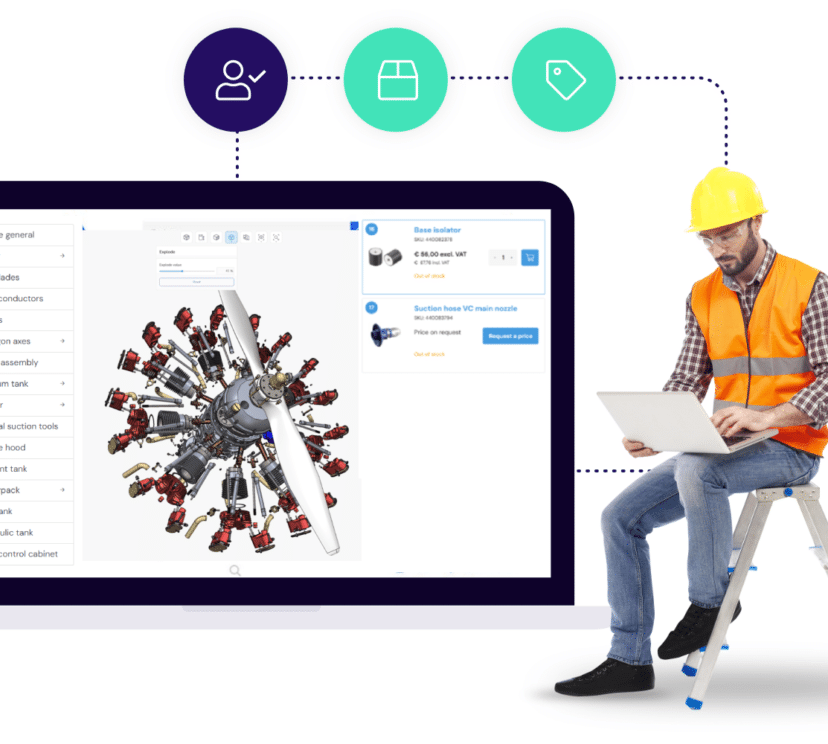
Sign Up for the Spare Parts Webinar
Ready to transform your spare parts management into a digital-first approach?
Join us for an exclusive NL webinar on May 8.
Join us for an exclusive US webinar on March 18.
Where we’ll guide you through key steps to launch a digital platform or further expand your spare parts business digitally.
Agenda:
- Practical tips for setting up and optimizing a digital commerce platform:
– Where to start
– How to scale up
– Hybrid solutions (integrating legacy installed base with new project rollouts) - Live demo showcasing different capabilities (Basic & Advanced)
- An inspiring customer case from Ottevanger, highlighting their successful aftersales digital transformation


